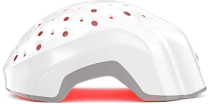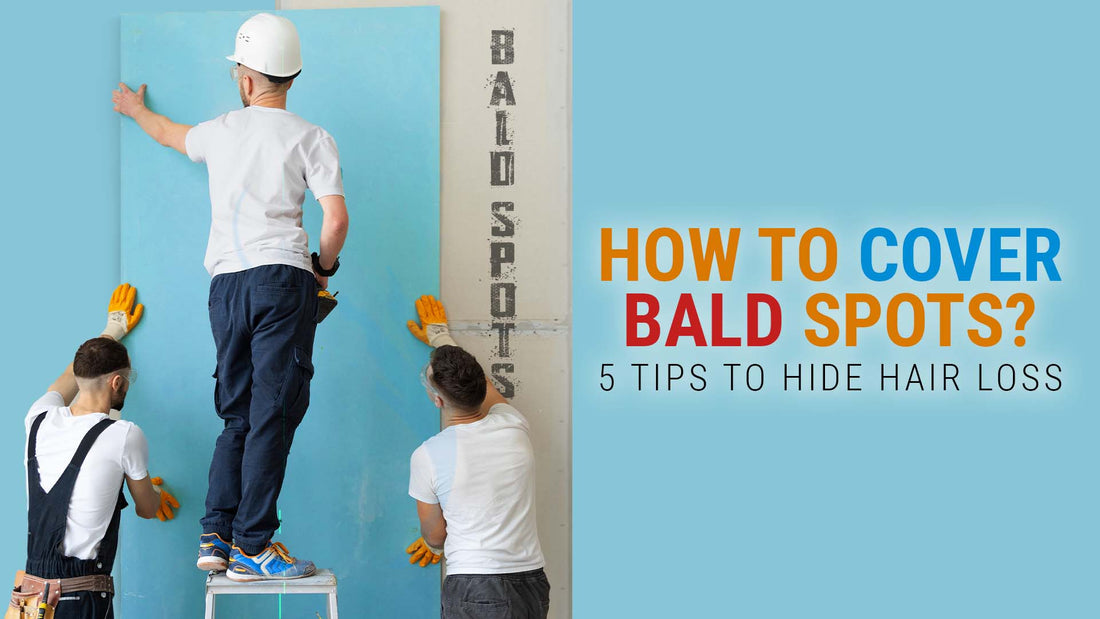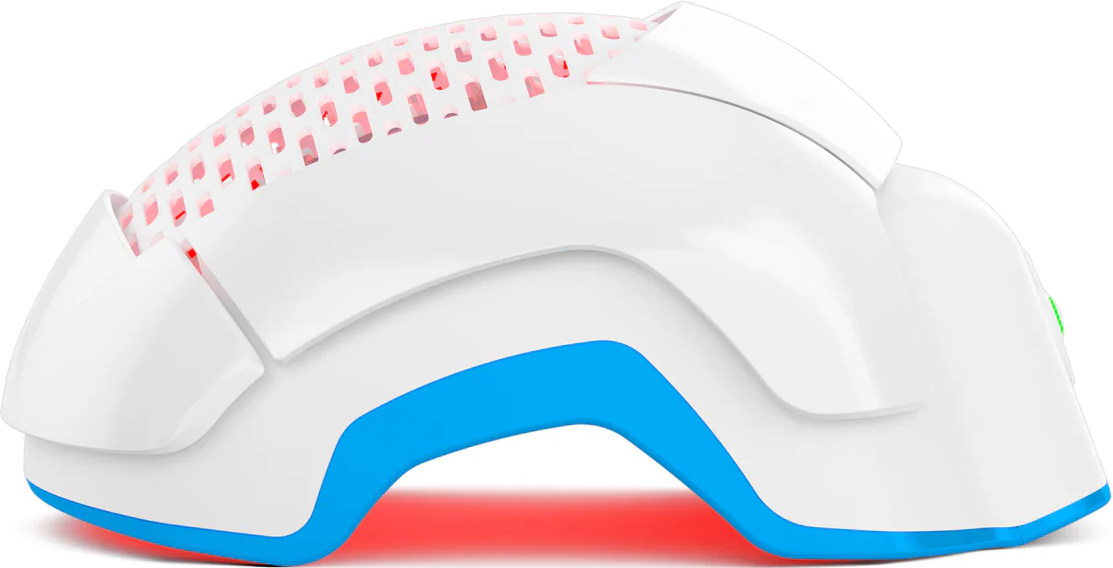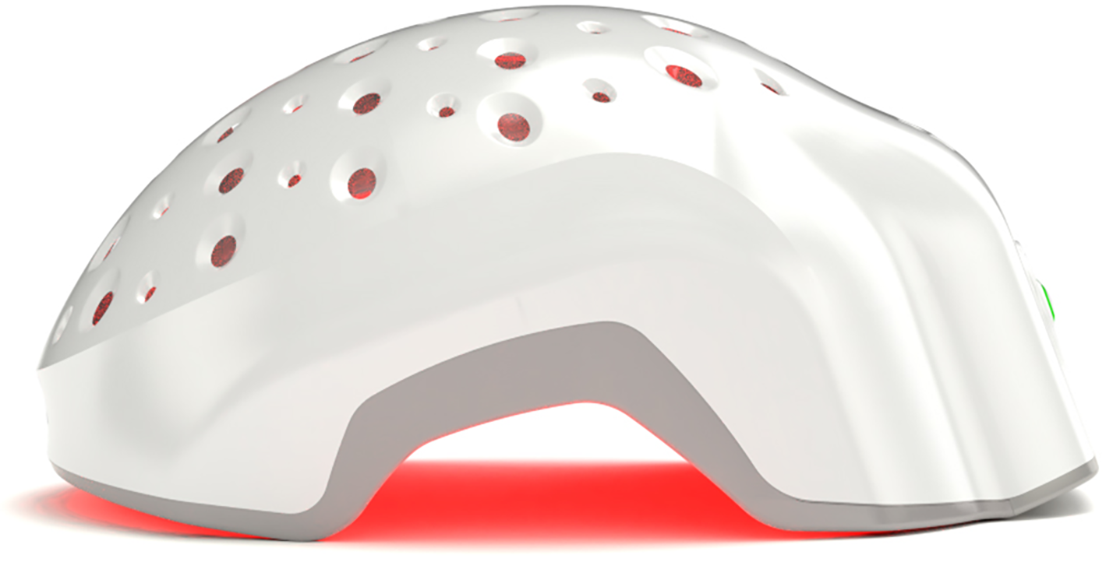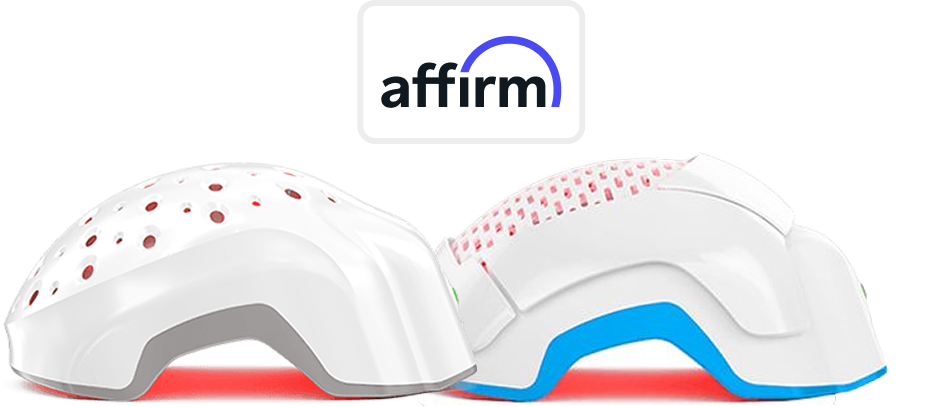When it comes to bald spots, there’s no shortage of quick fixes and camouflaging tricks—but where to start?
If you’re looking to hide thinning areas on your scalp while waiting for regrowth from treatments like Low-Level Laser Therapy (LPT), Finasteride, or Minoxidil, learning how to cover bald spots can be a game-changer. Whether it’s a subtle thinning patch or a more obvious balding area, covering up hair loss isn’t about hiding; it’s about owning your look with confidence. After all, who says hair fibers or a strategic part can’t be the perfect finishing touch?
But let’s face it: not all solutions are the same. Some tricks hold up through wind and weather; others might leave you with more smudges than confidence. So, how do you find reliable ways to conceal bald spots while your hair grows back?
How Are Bald Spots Formed?
Bald spots don’t just happen out of nowhere—they’ve usually got a few reasons behind them. One of the main culprits is androgenetic alopecia or pattern baldness. This type of hair loss, common in both men and women, occurs when hair follicles are genetically sensitive to DHT (dihydrotestosterone), a hormone that gradually causes the follicles to shrink. Over time, this shrinking reduces the thickness and visibility of hair strands, eventually leading to thinning areas or full bald spots.
Then there’s telogen effluvium, or stress-induced hair loss. Intense physical or emotional stress can shock hair follicles into an early rest phase, causing sudden, widespread shedding. While telogen effluvium is often temporary, it can leave a noticeable impact, with thinning patches or even a temporary bald spot that might stick around until stress levels normalize.
Nutritional deficiencies can also play a sneaky role. Low levels of iron, vitamin D, and other vital nutrients weaken hair roots, reducing hair strength and density over time. These deficiencies disrupt the growth cycle, and while the effects are often reversible, the thinning and patchiness they cause can be alarming. Bottom line? Bald spots don’t discriminate, and they have a knack for making an appearance when your body’s signaling it needs something more.
5 Tips to Cover Bald Spots
1. Use Hair Fibers or Concealers
When it comes to temporary bald spot concealers, hair fibers are a favorite for a reason: instant volume. These fibers, often made from keratin (the same protein in human hair), attach to your natural hair and scalp via static electricity, effectively masking thinning areas. They come in a wide range of shades to seamlessly blend with your existing hair color, making them one of the best ways to hide bald spots without the commitment of long-term solutions.
Pros
Hair fibers are easy to apply, offering quick, natural-looking coverage for everyday use. A few shakes, a gentle comb-through, and you’re good to go. And, they wash out with shampoo, so there’s no worry about long-term build-up.
Cons
They’re not waterproof. Rain, sweat, or a quick swim might leave your secret exposed, so they’re best used when you know you’ll be indoors or in controlled weather. Also, they might need a little touch-up throughout the day to maintain that freshly covered look.
2. Change Your Hairstyle
Styling can work wonders. If you’ve got hair left around the thinning area, try a side part or a layered cut. Layers and texture add body, creating the illusion of thickness while downplaying the appearance of bald spots. For longer hair, a top knot or high bun adds height and volume that can help camouflage a wider part or thinner patches.
Avoid overly layered styles if your hair is fine. Instead, stick to textured waves or gentle curls that add volume without exposing the scalp. Adding a little product to lift the roots can help, too, making your hair look fuller and drawing attention away from any thinning spots.
3. Wear Hats, Scarves, or Headbands
Sometimes, going the simple route is best. Hats, scarves, and headbands are quick, stylish ways to cover bald spots entirely. A cap, for example, gives full coverage while adding a casual look, whereas a silk scarf or patterned headband can lend a touch of elegance to any outfit.
Pros
No-fuss coverage that’s easy to put on and take off. Perfect for bad hair days or occasions when you just don’t have the time to style.
Cons
Not everyone wants to wear accessories every day, and they may not always be suitable for formal occasions. But for an easy solution to cover bald spots on the go, hats and scarves have you covered—literally.
4. Hairpieces or Wigs
For a more substantial solution, hairpieces and wigs offer full, customizable coverage that can look as natural as your own hair (sometimes even better). Modern wigs come in various textures, colors, and styles, making it easy to find one that blends seamlessly. For those who want something a bit more permanent, some hairpieces can be semi-permanently attached for longer wear.
Pros
The ultimate solution for all degrees of hair loss, wigs and hairpieces allow complete coverage. They’re versatile, suitable for everyday wear, and can be styled just like natural hair if made from high-quality materials.
Cons
The initial cost for a high-quality wig can be a bit steep, and maintenance is required to keep it looking natural. If you’re considering a wig for daily use, avoid synthetic options as they can appear less realistic and wear out faster.
Also, wearing wigs for long time can affect your hair health.
5. Hair Growth Treatments
For those looking beyond the quick fixes, hair growth treatments offer a longer-term approach. Products like Minoxidil work by increasing blood flow to the scalp and stimulating hair follicles, which may help with regrowth. PRP (Platelet-Rich Plasma) and Low-Level Laser Therapy (LLLT) are also options with promising results. PRP uses your own plasma to boost follicle health, while LLLT works by delivering laser light to stimulate dormant hair follicles.
Pros
These treatments target the root cause, potentially reducing the need for bald spot concealers in the long run. They offer a real solution for some users, especially when combined with a consistent routine and professional guidance.
Cons
Results vary, and they require a commitment to long-term treatment. If you’re looking for an immediate fix, these might not be the best ways to hide bald spots right now but could be worth considering for future regrowth.
Why Hide Bald Spots When You Can Grow Hair?
Covering bald spots is quick and easy, but regrowing hair on a bald spot is the long-term win. For those looking to grow hair back, options like Theradome, an LLLT helmet, and other innovative technologies can stimulate hair follicles and encourage thicker growth. Consult a professional to discuss treatments tailored to your specific type of hair loss.
Conclusion
No one likes a bald spot, but with the right approach, it’s easier than ever to manage. From fiber concealers and clever hairstyles to hats, wigs, and advanced treatments, covering bald spots can be as temporary or as permanent as you’d like. Take charge of your look with these solutions and confidently rock a fuller, natural style—bald spots need not apply!



